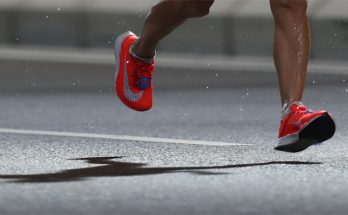There are a myriad of conditions that you might experience or even suffer from if you run on a regular basis. Achilles tendonitis, Meniscus tears, Bursitis, Chondromalacia Patella and Plantar Fascitis, not to mention hip and back pain. When the foot hits the ground, it’s first function is to absorb the impact. If various biomechanics are off, proper absorption can be inhibited which can cause pain in different parts of the feet.
The ankle and knee are also involved in the impact of running. Once the foot pronates to accommodate the surface, the ankle is positioned to allow the knee to move the body forward, the heel of the foot becomes the lever that helps in the propelling motion and ends with the toes leaving the ground. If any of these functions are misaligned, one or several painful conditions can develop. One of the most common problems that can have various effects on your feet, knees and ankles is over-pronation. You can tell if a foot over pronates in many cases just by looking at someone’s feet when they’re standing up. If they look like they’re “rolling inward,” chances are, they are overly pronated.
In a normal foot and ankle, there should be a certain degree of flexion, pronation and supination, which are necessary functions in the gait cycle. Excessive pronation is often the culprit in many of these condtions. However, it is not always the case and is sometimes misdiagnosed and often “treated” with custom-made orthotics or motion control shoes. The condition of over-pronation can actually be a lack of range of motion of the ankle, which causes the foot to over-pronate in order to compensate. If the foot and ankle are unable to bend back properly, it keeps the knee from propelling the body forward in correct alignment. The foot will then over-pronate, the knee will drift medially, and the hip will have to excessively rotate. When there is lack of motion somewhere in the body, naturally, another part of the body will compensate, but this will typically be accompanied by pain.
If the root of the problem is the range of ankle motion, and it is misdiagnosed as an over-pronation condition, you might be asking for more trouble. Often times, people will visit their doctor or even a shoe store in an attempt to get a solution to the problem. But without a full and comprehensive evaluation, the solution may come as custom-made orthotics or motion control shoes, which won’t actually solve the problem. In fact, it may exasperate it.
One way to gauge whether or not the over-pronation is caused by your foot or lack of ankle range is to stand with your feet apart about the width of your shoulders. Make sure your feet are pointing straight forward. Try and get into a squatting position with your knees bending at or below a 90-degree angle. The goal is to get into this position while keeping your heels on the ground and without your feet turning inward or outward. If you are unable to get into this position, the problem might be inflexibility in your ankles and not your feet. Before you attempt to correct such a problem, be sure to have a full and complete evaluation by a qualified doctor.





